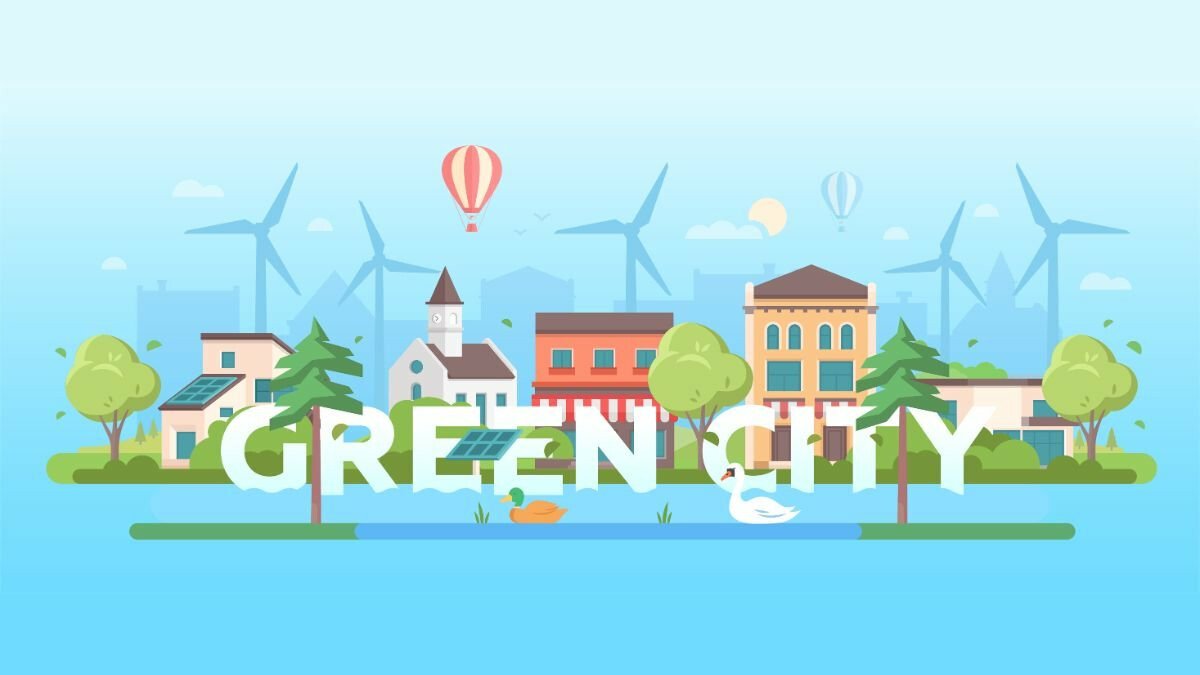20 May 2024 | Industry Insights
Understanding NABERS: Enhancing Building Performance and Sustainability with Digital Twins

Understanding NABERS: Enhancing Building Performance and Sustainability with Digital Twins
The built environment is being scrutinised to improve energy efficiency, reduce carbon footprints, and foster sustainable growth. NABERS (the National Australian Built Environment Rating System) is one significant framework at the forefront of these efforts. This accreditation standard is a robust tool for assessing and benchmarking a building's environmental performance. This article delves into NABERS, its accreditation standards, and how leveraging a digital twin can help achieve and maintain a NABERS rating.
What is NABERS?
NABERS is an internationally recognised rating system that assesses a building's environmental performance across various parameters, including energy, water, indoor environment quality, and waste management. By providing a clear benchmark, NABERS allows building owners, tenants, and managers to understand their buildings' performance compared to industry standards.
At its core, NABERS aims to drive improvements in building performance, promote sustainability, and reduce operational costs. The transparent ratings enable stakeholders to make informed decisions about building management and investments.
Consider a commercial office building seeking to attract high-profile tenants. A strong NABERS rating demonstrates the building's commitment to sustainability and operational excellence, making it more appealing to environmentally conscious businesses. Similarly, residential buildings with higher NABERS ratings often see increased property values and tenant satisfaction due to enhanced living conditions and lower utility costs.
NABERS Accreditation Standards
NABERS offers several ratings, each tailored to specific aspects of building performance. These include:
- NABERS Energy: This measures a building's energy efficiency, factoring in electricity, gas, and other fuels used in its operation.
- NABERS Water: This assesses water usage efficiency, considering water consumption, recycling, and overall management.
- NABERS Indoor Environment: This evaluates indoor air quality, lighting, temperature, and acoustics to ensure occupant comfort and health.
- NABERS Waste: This examines the management of waste generated by the building, focusing on reduction, recycling, and disposal practices.
Ratings are awarded on a scale from 1 to 6 stars, where one star indicates poor performance and six stars signify market-leading efficiency. The performance assessment process involves rigorous data collection and analysis, typically overseen by accredited NABERS assessors.
For example, obtaining a NABERS Energy rating involves tracking and analysing a building's energy consumption over 12 months, adjusted for variables like climate and occupancy. This comprehensive approach ensures the ratings are accurate and reflect real-world performance, providing stakeholders with actionable insights.
Leveraging Digital Twins to Achieve NABERS Ratings
With a clear understanding of NABERS and its accreditation standards, let's explore how digital twin technology can play a pivotal role in achieving and maintaining these ratings.
A digital twin is a dynamic, virtual representation of a physical asset or system enriched with real-time data and capable of simulating various scenarios. In building management, a digital twin offers unparalleled insights into a structure's operational efficiency and performance.
Real-Time Monitoring and Data Collection
One of the most significant advantages of using a digital twin is its continuous monitoring of a building's performance. By integrating IoT sensors and other data sources, a digital twin provides real-time information on energy consumption, water usage, indoor environment quality, and waste generation. This continuous flow of data is crucial for identifying inefficiencies and areas for improvement, aligning perfectly with the criteria used in NABERS assessments.
For instance, suppose a commercial building aims to improve its NABERS Energy rating. By deploying a digital twin, facility managers can gain detailed insights into energy usage patterns, pinpointing peak consumption periods and potential waste sources. With this information, they can implement targeted interventions, such as optimising HVAC systems or adjusting lighting schedules, to enhance energy efficiency and boost their NABERS rating.
Predictive Maintenance and Optimisation
Digital twins also enable predictive maintenance, a proactive approach that anticipates equipment failures before they occur. By analysing data trends and identifying anomalies, a digital twin can alert maintenance teams to potential issues, allowing them to address problems early and avoid costly downtime. This predictive capability is instrumental in maintaining the consistent performance levels required for high NABERS ratings.
Consider a scenario where a digital twin detects an abnormal increase in water consumption, potentially indicating a leak. Early detection enables prompt repairs, minimising water wastage and preserving the building's NABERS Water rating.
Enhanced Collaboration and Decision-Making
Digital twins facilitate collaboration among various stakeholders, from building owners and managers to tenants and maintenance teams. A digital twin ensures everyone has access to the same accurate, up-to-date information by providing a single source of truth. This transparency fosters better decision-making, coordinated efforts, and a unified approach to achieving sustainability goals.
For example, during a retrofit project to improve a building's NABERS Indoor Environment rating, architects, engineers, and facility managers can use the digital twin to test different design modifications virtually. This collaborative effort ensures that all changes are aligned with the desired outcomes, resulting in a more efficient and occupant-friendly indoor environment.
Cost Savings and ROI
Finally, implementing digital twins can lead to significant cost savings. By optimising resource usage and preventing inefficiencies, buildings can reduce operating expenses and achieve a higher return on investment. These financial benefits complement the environmental advantages, making digital twins a compelling solution for any building seeking NABERS accreditation.
In conclusion, NABERS is vital for assessing and improving a building's environmental performance. Achieving and maintaining a high NABERS rating benefits the environment, enhances property value, reduces operational costs, and attracts high-quality tenants. Digital twins offer a powerful means to achieve these ratings, providing real-time insights, predictive maintenance, enhanced collaboration, and significant cost savings.
As the construction industry evolves, integrating digital twins with NABERS accreditation standards represents a forward-thinking approach to sustainability and operational excellence. This synergy between advanced technology and robust benchmarking frameworks is set to redefine the future of building management, paving the way for smarter, greener, and more efficient buildings.

Industry Insights
Digital Twins for Retrofitting: Enhancing Building Performance and Energy Efficiency
While digital twins are often associated with new builds, they also hold significant potential for improving the performance and energy efficiency of existing buildings through retrofitting. In this insight article, we look at how digital twins can help drive building performance and energy efficiency for retrofits too.
Read more

Industry Insights
Building a Greener Tomorrow: The Power of Global Building Performance Standards
Let's discuss the unsung heroes of the building industry who are making a significant contribution towards saving our planet - building performance standards. These standards are crucial in our fight against climate change, guiding us towards a more sustainable, energy-efficient, and cost-effective future.
Read more
Book your one-on-one appointment with one of our specialists.
info@twinview.com
+44 (0)844 800 6660
London
24 Greville Street
Farringdon
London
EC1n 8SS
Newcastle
Spaceworks
Benton Park Road
Newcastle upon Tyne
NE7 7LX

